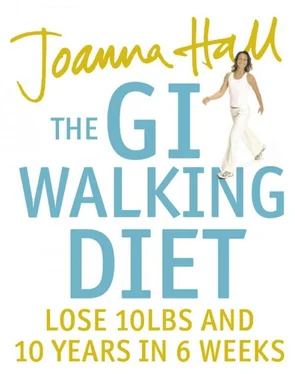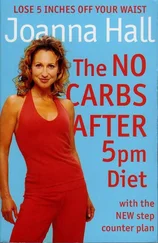In physical terms, the ageing process results in a gradual loss of coordination, flexibility, strength, power and endurance. These physiological changes can have a significant impact on our emotions, our ability to lead independent lives and our energy and self-esteem.
Whether you like it or not, your body will go through a number of changes as it ages. How these changes affect you is partly dependent on your genes, diet, and how physically active you have been through your life. Think about how your parents or siblings have aged and you’ll have a good indication of how your body is affected by your genes. The geneticist Claude Bouchard believes that genes determine 60 to 80 per cent of the body’s rate of physical change; other factors, such as diet and the amount and type of physical activity we take, can change our bodies by 20 to 40 per cent.
Fortunately, evidence suggests that your physical activity levels after the age of 35 can have a more significant effect on how you age than the amount of exercise taken in earlier years. Although you may not be able to reverse declines in physical function, they can be slowed down. Understanding what is happening to your body can help you appreciate how your diet and activity levels can positively impact upon your weight, energy, posture and, most importantly, how you look and feel about yourself.
A fit man at 70 is the same as an unfit man at 40.
Much of the deterioration attributed to ageing is now linked to physical inactivity. Our goal is to push back frailty to a very small part of life experience. Or, as the philosopher Ashley Montagne has urged, ‘To die young as late in life as possible.’
You can do this without spending masses of time exercising, waving goodbye to your existing lifestyle or surviving on a diet of bizarre foods. And you can do this in just six weeks.
Ageing and Physical Ability
Strength, power, endurance and flexibility are terms we often hear, but understanding exactly what they mean will help you appreciate your own body’s needs, allowing you to tailor the six-week plan to your needs.
Muscular strength refers to the maximum force that can be exerted by a muscle group. You may be more familiar with strength referring to the maximum weight or load that can be lifted once. Power refers to the greatest amount of force that can be exerted, and requires both strength and speed of movement. This may all sound rather technical, but in real terms the impact of these capacities on your body can be far-reaching. Muscle strength declines significantly with advancing age, which results in a decreased ability to perform many daily tasks. Activities such as lifting heavy shopping bags can become difficult. Your grandchild may need to be handed to you rather than you being able to lift them directly from the floor. Even getting out of a low chair can pose a problem, perhaps requiring a few momentum-gathering rocks backwards and forwards to get you up. Later in life, both strength and power are important for balance and reducing the risk of falling.
Endurance, often referred to as stamina, is a muscle’s ability to keep going. All muscles need endurance – the muscles of your legs need it to keep walking, for example – but one of the most important muscles is the heart. The endurance of your heart is vital to your wellbeing, and it’s often referred to as your ‘huff and puff’. Having poor endurance means that it can be hard work running after a bus, train or walking briskly up a hill. Climbing a flight of stairs can leave you feeling uncomfortable and breathless. If you have young grandchildren, you’ll know how much energy and endurance they have and how you need to be able to keep up with them!
Flexibility refers to the range of motion at a particular joint, while mobility refers to the ability to take your joints through this range. Flexibility and mobility are determined by the elasticity of the connective tissue, as well as the specific length of individual ligaments and tendons. As we age, the connective tissue becomes less elastic. The special lubricating synovial fluid – found inside certain joints such as the hip, knee and shoulder – becomes less mobile and runny. This makes joints feel stiff and perhaps a bit ‘clicky’, limiting the range of motion we may be able to take them through. This can make it difficult to unzip a back-fastening piece of clothing, to reach up for something on a top shelf or to bend down to pick something up. Maybe even getting your leg up and over the bath can be a bit of a challenge, requiring you to hold on to something for support. Or perhaps you find when you need to turn to see something you have to turn your whole body around, instead of just being able to rotate at your waist.
The bottom line is that maintaining your level of physical capacity in terms of strength, endurance and flexibility is very important for continued independence. Power, strength and flexibility are all closely related, and improving one of these will have a knock-on effect on the others. The GI Walking Diet enables you to improve all these abilities in a simple, effective and easy-to-follow way.
Physiological Effects of Ageing
Resting Metabolic Rate
Your resting metabolic rate (RMR) is the amount of calories your body requires just to live. It’s determined by your weight and the amount of muscle and body fat you have. As we age, RMR tends to decline. This is partly due to decreased muscle mass. It’s also affected by changes to your nervous system, specifically the sympathetic nervous system (SNS), slowing the response time between brain messages and muscle movement. Resting metabolic rate is what most people mean when they say ‘basal metabolic rate’ (BMR). These two terms are used interchangeably, although they are not technically the same.
As part of the normal ageing process, most body organs decrease in functional capacity, resulting in a 2 per cent decline in BMR each decade. However, if physical activity also declines, BMR will decrease more quickly, and there will be a greater increase in fat mass. This means that, over time, your metabolic rate slows down, and weight gain will occur unless you decrease the amount of calories you consume and increase your level of physical activity. Your metabolic rate may also decrease as the cardiovascular, gastrointestinal and respiratory systems slow down with age, which can influence digestion, absorption and nutrition needs.
What This Means to You
The biggest impact of a reduced RMR is that you will find it more difficult to maintain a healthy weight, and you may experience weight gain.
What You Can Do
Experts are divided on how much weight gain is a product of the natural ageing process and how much is attributable to other factors, such as decreased energy expenditure through physical activity. But one thing’s certain: decreased physical activity results in less muscle mass, which in turn impacts upon your RMR or the rate at which the body burns calories. But it doesn’t have to be like this …
Action Worth Investing In
By following the six-week plan, specifically the walking and strength programme, you can feel confident that you will lose weight.
Most researchers who have evaluated the effects of ageing on the stamina of the heart and lungs have focused on ‘maximal aerobic fitness’ or VO 2MAX. This refers to the body’s maximum ability to take in oxygen, transport it around the body in the blood and use it to burn fuel in the muscles. This is considered to be the single best indicator of the changes that occur in the body with ageing. After 25 years of age, VO 2MAX normally declines at a rate of 8 to 10 per cent per decade for both men and women. Approximately half of this decrease has been related to people exercising less and gaining weight as they age.
Читать дальше












